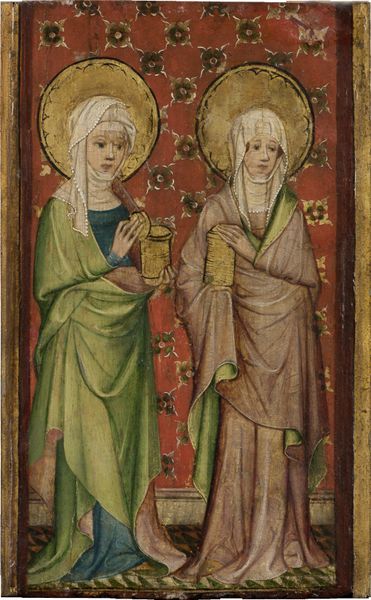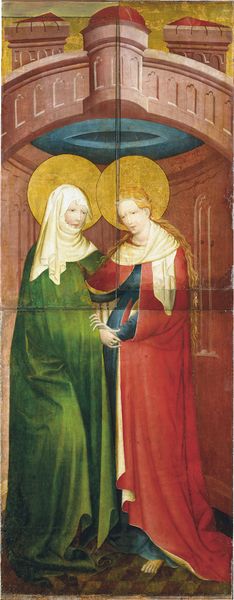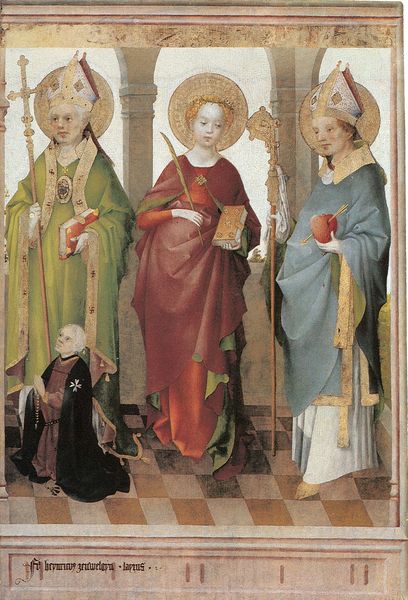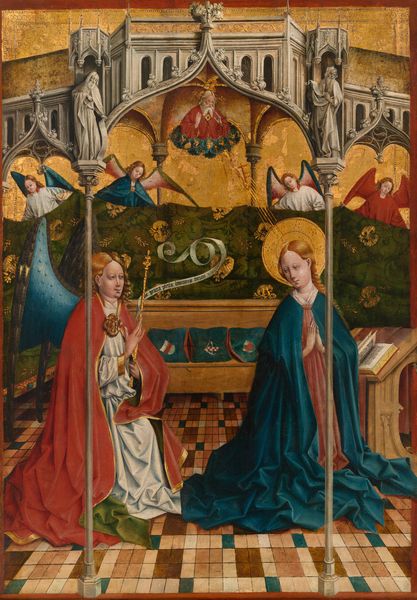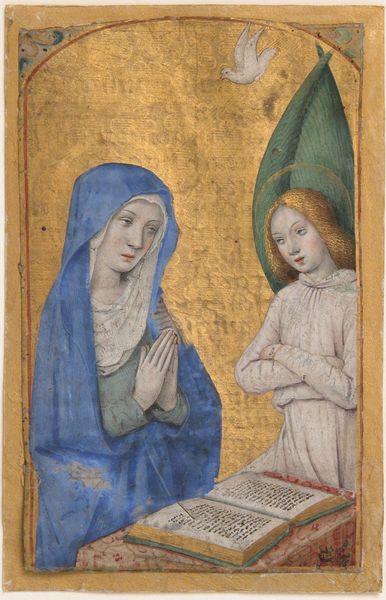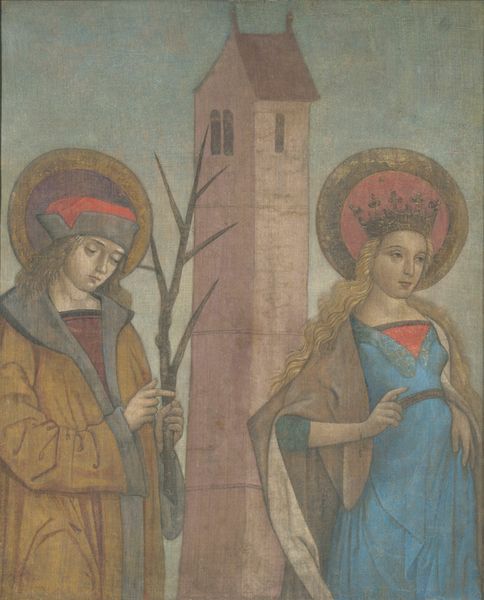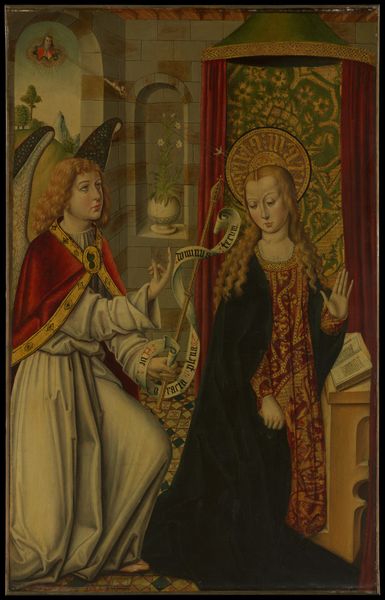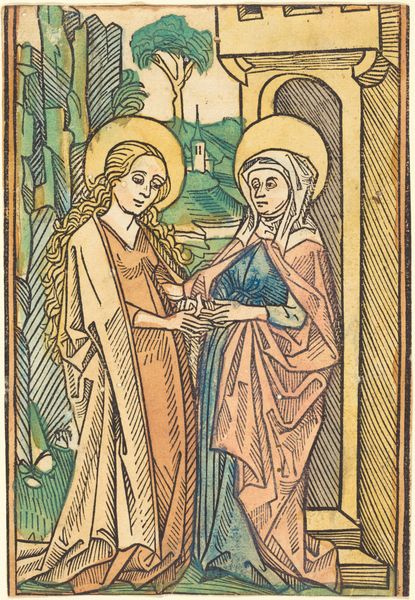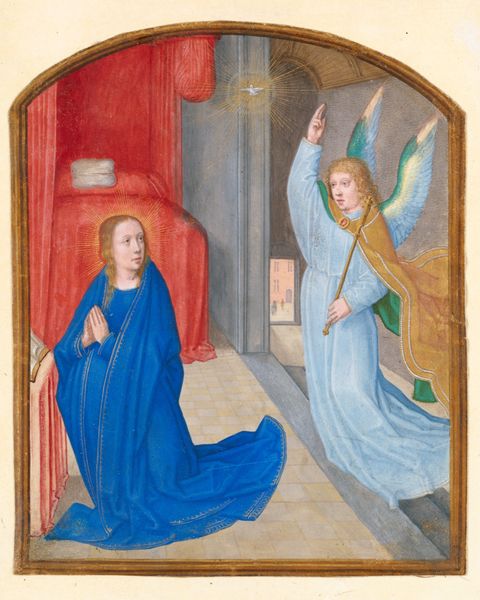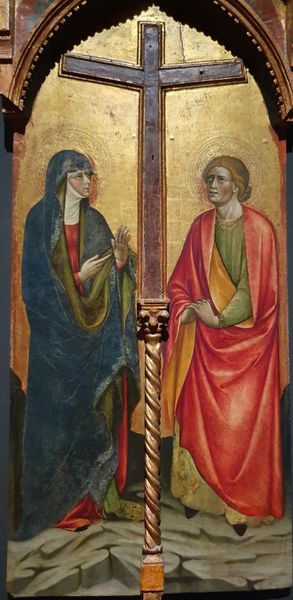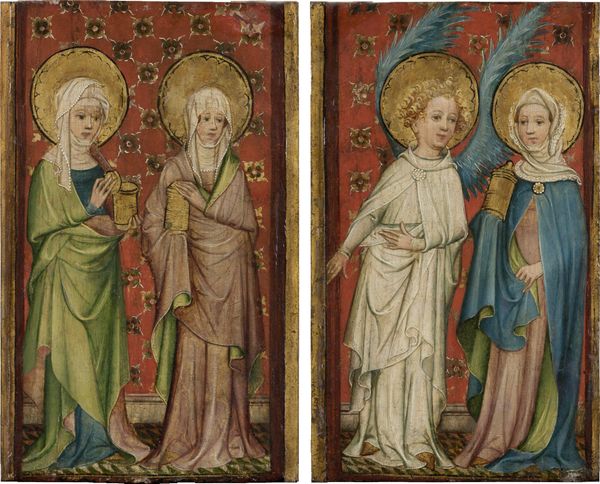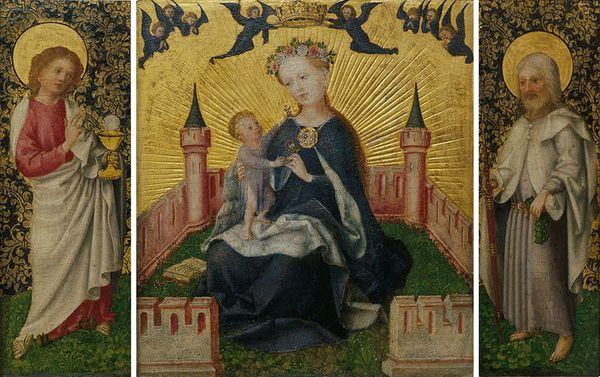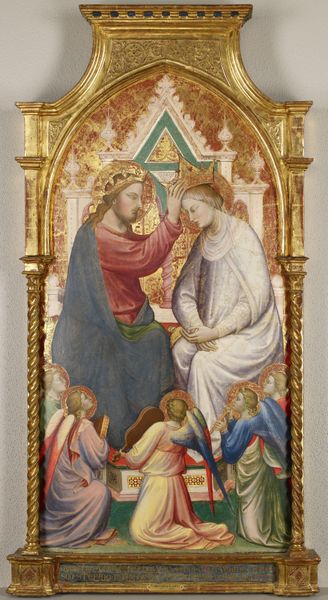
panel, tempera, painting
#
portrait
#
woman
#
medieval
#
panel
#
narrative-art
#
tempera
#
painting
#
figuration
#
oil painting
#
12_15th-century
#
history-painting
#
international-gothic
#
angel
Dimensions: 30.2 x 18.1 x min. 1.3 cm
Copyright: Public Domain
Curator: Here we have "The Angel and Mary Magdalene at the Sepulchre," a tempera on panel work created around 1400, currently housed in the Städel Museum. It’s attributed to an anonymous artist and rendered in the International Gothic style. Editor: My initial impression is one of gentle solemnity. The colour palette is muted, but there's an undeniably ethereal quality, especially around the angel’s form. It appears that there’s almost an anticipation emanating from the artwork. Curator: Absolutely, and this is where historical context becomes vital. Consider the role of Mary Magdalene within early Christian narratives and how interpretations of her identity have shifted across centuries. Editor: Yes, but beyond the immediate narrative, the careful application of light and shadow gives shape to the figures. We are led to contemplate the textures: the softness of the angel's robe, the weight of Mary’s cloak. Notice the almost symmetrical composition and consider its visual impact on our interpretation. Curator: This painting is created within a framework of religious devotion but consider it as a site of ideological and societal inscription. It upholds particular representations of femininity and faith in its time. How does that play into both individual experience of faith but also socio-cultural status? Editor: Agreed. Furthermore, observe the way the halos flatten into decorative disks and draw the eye upward. There’s a conscious rejection of strict realism, replaced by stylized forms meant to evoke spiritual resonance. The medium—tempera on panel— contributes to this, doesn't it? Curator: These formal elements, while creating beauty, also served to reinforce power dynamics. Art production and consumption are tied to questions of who has a voice and whose stories get told. Art has power, even paintings as old as this. Editor: Well said, and those visual elements—line, color, form—serve as a gateway. When viewing this artwork in isolation from its context, the semiotic richness reveals layer after layer of complex artistry. Curator: Exactly. This painting invites us to contemplate not only the biblical story but also its legacy within our ever-evolving world. Editor: Indeed, it speaks to us both as a historical artifact and as a testament to the enduring power of visual expression.
Comments
No comments
Be the first to comment and join the conversation on the ultimate creative platform.
